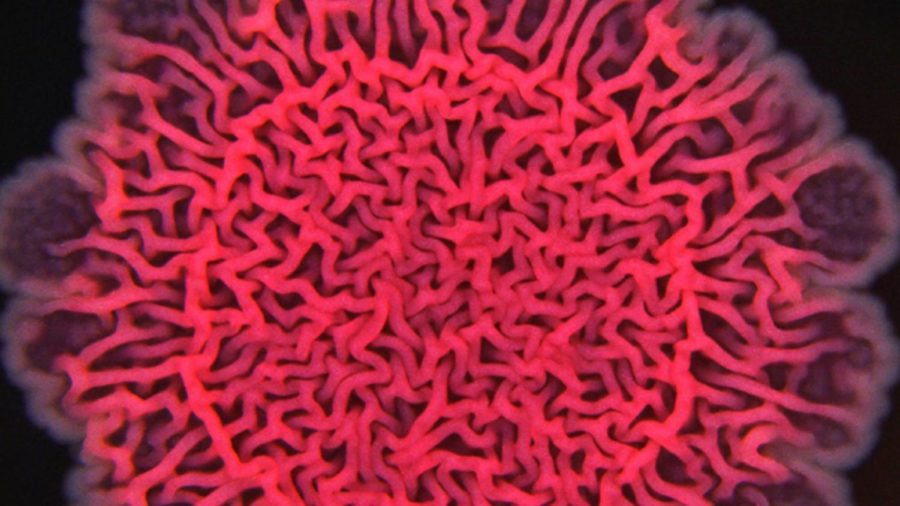Dr. Sampriti Mukherjee has long been fascinated with sensory perception and the way external signals are translated into behaviors in humans and other organisms. At the newly launched Sampriti Mukherjee Lab at the Department of Molecular Genetics and Cell Biology, she will focus this curiosity on bacteria and how they respond to signals to transition from behaving as individual cells to acting collectively. Mukherjee hopes to pave the way for new therapeutic interventions addressing the ongoing crisis of multidrug-resistant bacteria.
Bacterial mutations coupled with the constant use of antibiotics in treating bacterial infections have caused infectious bacteria to become increasingly resistant to antibiotics. Modern medicine desperately needs a way to turn off or get around antibiotic resistance in bacteria. Mukherjee’s lab will investigate a potential way to do this.
According to the Mukherjee lab website, their “overarching goal is to understand how bacteria decode and integrate self-generated and environmentally-derived stimuli to control transitions between individual and collective behaviors.”
Mukherjee told The Maroon that she is interested in the “social aspect” of bacteria. Bacteria live in their own societies and communicate with each other by secreting and receiving small molecules. For example, once a bacterium receives enough molecular signals to “know” that it is living with many fellow bacteria, it will exhibit certain behaviors. This response to population density is known as quorum sensing. One of the behaviors that can result from quorum sensing is the formation of a biofilm, or a structured antibiotic-resistant community that makes bacteria a potent pathogen.
For her postdoctoral research at Princeton University, Mukherjee studied quorum sensing and biofilm formation. She looked at the human pathogen *Pseudomonas aeruginosa* and made a surprising discovery. She found that light could inhibit its biofilm formation. “Indeed, I can shine light on *P. aeruginosa* and repress biofilm formation and virulence factor production,” she writes on her Google site. This finding was particularly interesting because *P. aeruginosa* is a non-photosynthetic bacterium, so its photoreceptors are largely mysterious and under-studied.
Mukherjee is currently “dissecting how quorum sensing and photo sensing converge to control bacterial collective behaviors,” according to her Google site. She told The Maroon that she has characterized the downstream pathway of the main photoreceptor in *P. aeruginosa* and that in the future she hopes to collaborate with other labs on campus to experiment with phototherapy on mice. She also hopes to “understand the photoreceptor at a molecular level” with the use of biochemistry techniques to ultimately be able to manipulate this light-driven biofilm formation and lessen antibiotic resistance.
The coronavirus pandemic has presented challenges in setting up a new lab this fall. “You can’t just walk into someone else’s lab [for a tour],” Mukherjee said. She has also “always interacted with and trained undergraduates and graduate students,” something the pandemic has made difficult today. Even so, Mukherjee has been able to familiarize herself with Chicago somewhat. “I love the lake,” she said. “The park by the lake is wonderful.”









